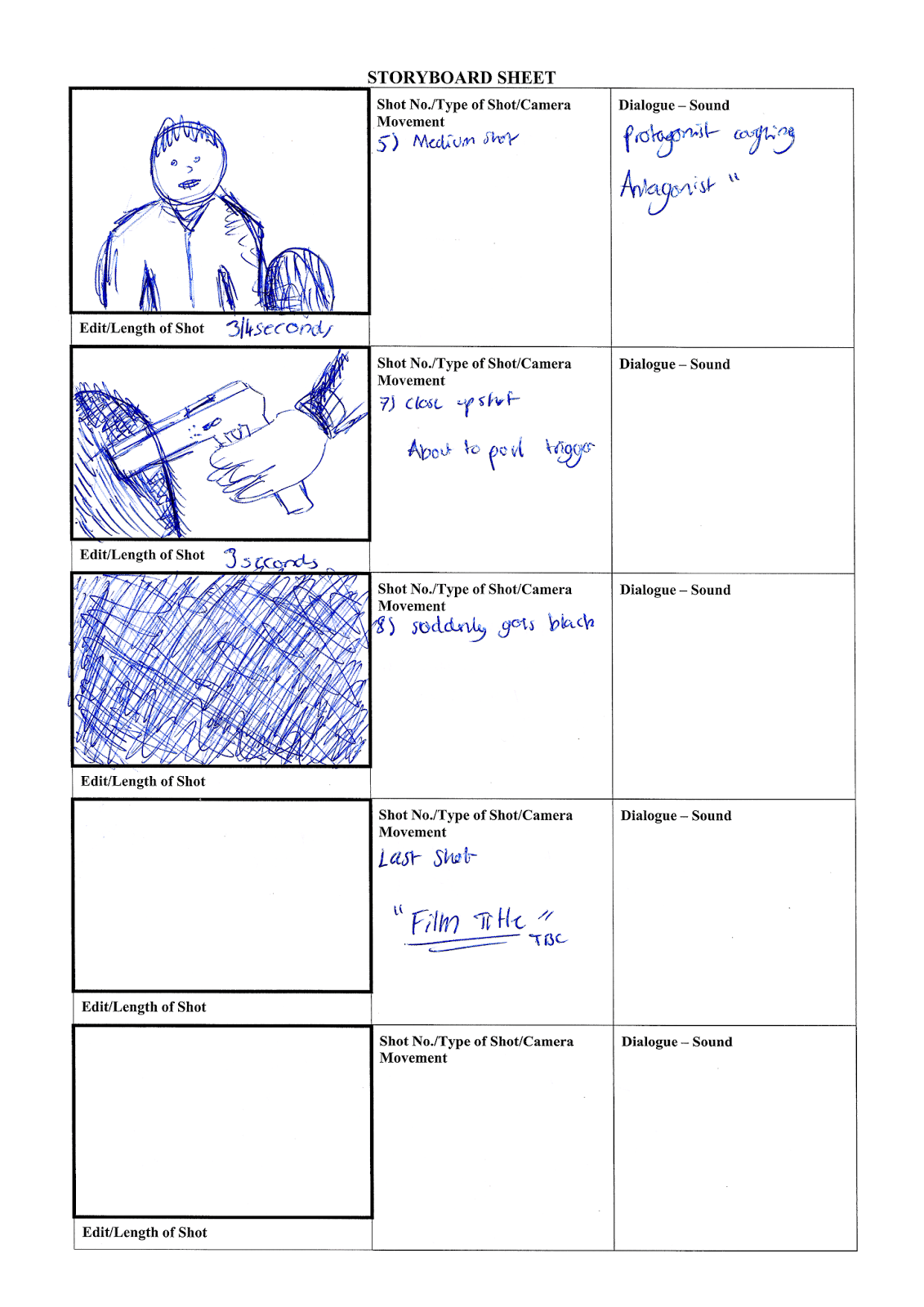Camera Shot Types
Extreme Close UpAn extreme close up is used particularly to focus on a certain part of a subject (e.g. eyes). This shot calls attention to the subjects which will make them more memorable. Extreme close ups are used mainly to express emotions (e.g. tears coming from an eye) or to show any characteristics.
Close Up
A close up shot is similar to the extreme close up when it comes to the effect it has and its job - a close up shot is used to capture a subjects emotions (normally by facial expression) Close ups tend to be of the full face and are used primarily to emphasize a persons emotions.
Medium Shot
A medium shot shows a figure from the knees/waist up, these shots tend to be used for dialogue scenes or to show detail of the subject. There are various types of medium shot for example a Two Shot, is a medium shot of two people which again is normally used for any type of convocation.
Long Shot
A long shot is normally used to reveal more about a character (visually) and to show us the type of environment they are in. Long shots reveal a lot to the scene as they show a lot of a subjects surroundings as well as themselves. This shot is effective because it will make the audience feel like they are in the location in which the shot is seen.
Extreme Long Shot
An extreme long shot focuses more on the setting than the characters, it is shot from very far away and is used to capture something big happening in a scene (e.g. large explosions). Extreme long shots are commonly used for Establishing Shots which are shots used at the start of a film of sequence to show the audience the overall setting or location of where the film is set.
Birds Eye View
Birds eye view is a Camera Angle which is taken from directly above the subject/location of the scene, this shot is generally used to make the audience feel 'godlike' and to make the subjects look small and inferior.
High Angle Shot
High angle shots are very similar to Birds eye view shots however they are at more of an angle rather than being directly above. The effectiveness/purpose of these shots are very similar though as they are used to make the subjects look vulnerable or inferior.
Low Angle Shot
Low angle shots are the complete opposite to high angle shots as they are used to make the subject look powerful and have more authority, these shots tend to be used primarily on the antagonist of the film or anyone who is portrayed as powerful.
Canted Angle
A canted angle means a tilted angle. This shot type is commonly used in the horror genre as it is used to create an imbalance or instability within the scene. This shot type is usually used as an alternative to the POV (Point Of View) Shot and is usually used by a hand held camera.












